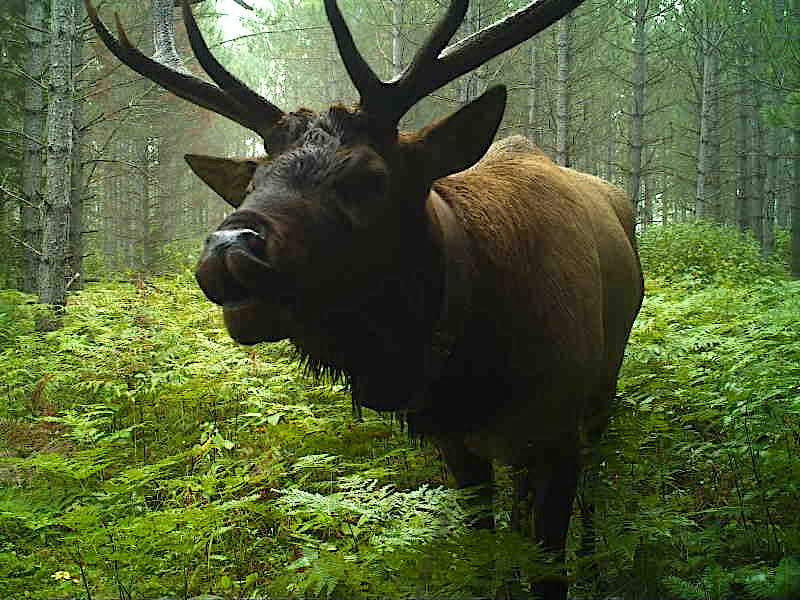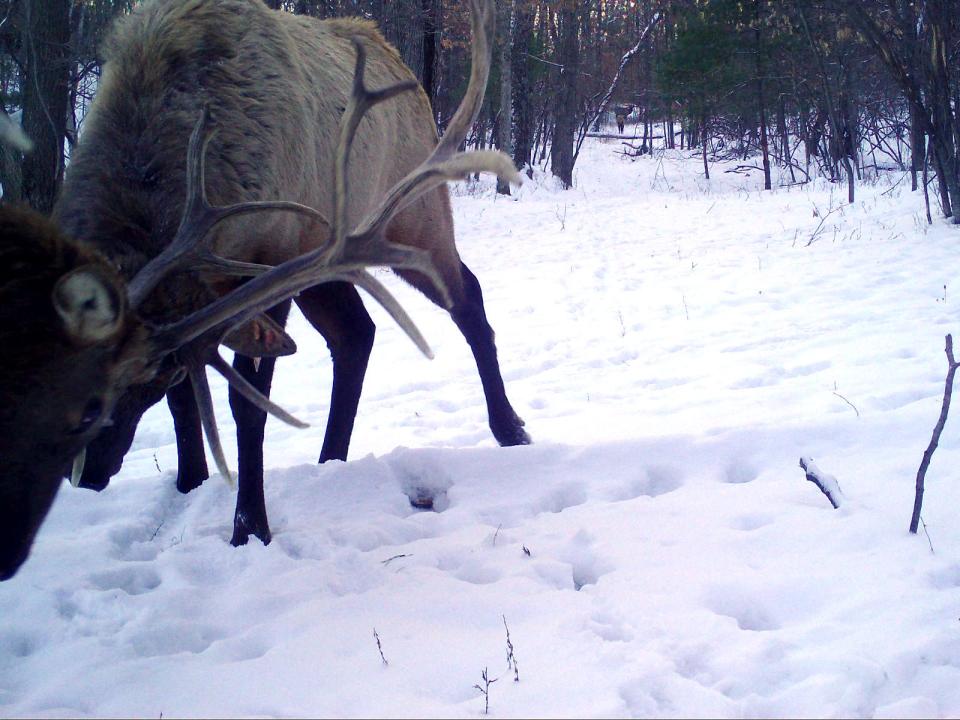A hunting season for elk in Wisconsin's central herd is coming for the first time this fall
For the first time this fall, the Department of Natural Resources will offer a bull elk hunting season in both of Wisconsin's elk herds.
The agency announced the decision at Wednesday's Natural Resources Board meeting in Madison.
The northern herd, established in 1995 near Clam Lake, has had an elk hunt since 2018.
More: Outdoors calendar
But the central herd, mostly in Jackson County, was started in 2015 and until this year hadn't been approved for a hunting season.
In recent months both the DNR's Elk Study Committee, which includes agency wildlife staff as well as members of the public, tribes and conservation groups, and the DNR's Wildlife Leadership Team voted in favor of a central herd hunt.
“Having the opportunity today to announce an elk hunt in the Central Elk Management Zone is a true testament to the partnerships and hard work that was incurred over the years of the reintroduction efforts and also is a testament to elk management in Wisconsin,” said Christina Kizewski, DNR wildlife biologist in Jackson County.
The department did not say how many tags would be issued in either zone. But it's likely two to four bull tags would be offered in the central herd and seven or eight in the northern herd. The bull-only format is designed to protect cows and promote additional increases in the herd.

Under the rules of the Wisconsin elk hunt Ojibwe tribes may declare up to 50% of the quota in the northern herd. The other half are entered into a random drawing for Wisconsin resident applicants.
All tags available in the central herd will be randomly drawn for Wisconsin state license holders.
Elk were native to Wisconsin but wiped out in the 1880s due to unregulated hunting and habitat loss.
The Badger State started an experimental elk reintroduction project in 1995 when 25 animals were transferred from Michigan to the Chequamegon-Nicolet National Forest near Clam Lake.
To further increase the herd size and its genetic diversity, about 150 additional elk were transferred from Kentucky to Wisconsin between 2015 and 2019. Some of those transfers created the central herd in 2015, with most of the animals in the Black River State Forest in Jackson County.
Both herds have grown since reintroduction. The 2023 statewide population estimate was 10% higher than the same time last year and set a modern record high with an estimated 515 animals in the state, according to the DNR.

The northern herd had 355 elk last summer, including 186 cows, 82 bulls and 87 calves, according to DNR estimates. Most of the herd is found in the Chequamegon-Nicolet National Forest near Clam Lake.
Meanwhile last summer the DNR estimated the central herd at 160 elk, including 67 cows, 59 bulls and 34 calves.
Notably, the central herd has grown at about 17% annually over the last five years, Kizewski said. Adult elk in the central herd have sustained about 15% annual mortality rates, with vehicle collisions the leading cause.
The DNR projects there will be 34 to 37 mature bulls in the central herd during this fall’s hunting season.
Hunter interest is high in the Wisconsin elk hunt but has decreased since it was initiated. In 2018 the DNR received 38,494 applications for the hunt with the number falling to 21,313 in 2023.
The offering of a central herd hunt could increase applications this year.
Seventy percent of the $10 application fee is earmarked for elk management, habitat improvement and research.
The 2024 seasons will take place from Oct. 12 to Nov. 10, and again from Dec. 12-20.
The elk hunt application period is open through May 31. Winners will be selected in June. To purchase an elk hunt application, visit the Go Wild website or a Wisconsin license sales outlet. For more information visit dnr.wi.gov.
This article originally appeared on Milwaukee Journal Sentinel: Wisconsin to have elk hunt in central herd as well as northern in 2024
